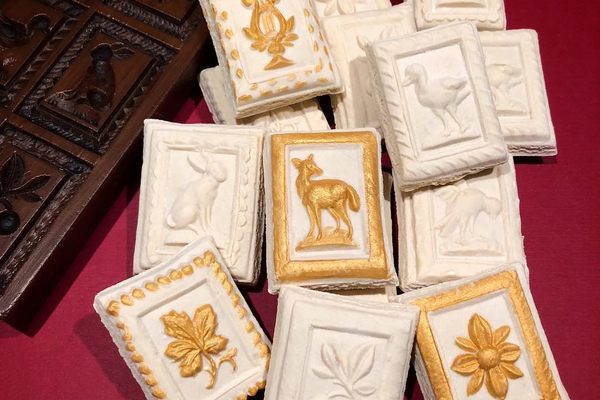Sweets
St. Martin's Croissant
Bakers fold this Polish pastry 81 times into the shape of a horseshoe.
When a century-old food tradition is protected by law, it’s probably worth a try, especially if its primary ingredients include flour, butter, and sugar. In Poznán, Poland, one baked good enjoys such status: the St. Martin’s croissant. As the story goes, after hearing a sermon at St. Martin’s church in the late 19th century, one local baker, taking to heart the priest’s message about being charitable toward the poor, created a croissant for distributing to those in need. Having recently watched a horse lose its shoe, the baker shaped the pastry into its now-characteristic horseshoe shape. He shared the treats with the poor, and a warmhearted tradition was born.
Unlike French croissants, the St. Martin’s croissant is folded 81 times. Between each fold, bakers layer a pastelike mixture of poppy seeds, nuts, raisins, almonds, sugar, and butter. Glazed and sprinkled with sugar and nuts, the croissants must weigh between 150 and 250 grams. There are rarely complaints about the pastry’s generous size.
Poznians celebrate the baker’s generosity on St. Martin’s Day. Every November 11, the town holds a parade and consumes upwards of 700,000 croissants. Those looking to try their hand at a little dough-slinging can visit the St. Martin’s Croissant Museum, where visitors learn about the history of the croissant while baking them. Just tasting the history of yore is, of course, also an option. Bakeries throughout the city sell the cherished treat year-round.
Where to Try It
-
St. Martin's Croissant Museum
Stary Rynek 4, 61-772 Poznán, PolandMuseum visitors can lean about the croissants while baking them.
-
Hanna Piskorska Cukinaria
Paderewskiego 11, 61-770, Poznań, PolandThis bakery has several locations in the city.
Written By
 Leigh ChavezBush
Leigh ChavezBush














